by Gina Mathew, Couture Rani
Follow Gina on twitter @couturerani
When I first heard about Indian American fashion designer, Amy Devan, I was amazed at how quickly she was able to create and market her first collection. Wanting to know more, I reached out to Amy to learn about her business and the steps she took to build, brand and launch her business, Naveda Couture.

Amy Devan
What was your ambition growing up – what did you want to do?
I had always been drawn to all things art and design for long as I can remember. As a kid, I was always drawing and sketching anything that inspired me – including fashion. However, I knew that as an Indian daughter, it would be a challenge for me to express my love for fashion design so instead – because it was related to engineering and mathematics and a more “acceptable” or “stable” path – I started to become interested in architecture and believed it would be my life’s calling. 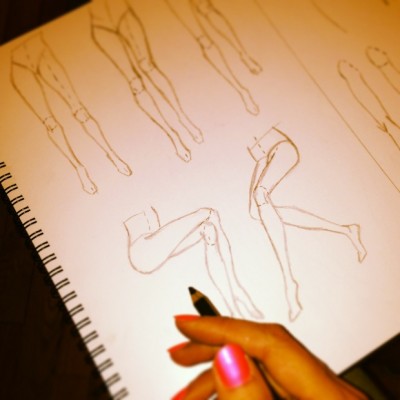
However, when it came time for college, the economy unfortunately had taken a big hit, particularly the construction industry. Becoming an architect was simply not in the practical cards for me at that time and so I followed my entrepreneurial spirit and went on to study Marketing and Finance, then on to earning my MBA. I come from a family of business minded, passionate leaders and had been encouraged since childhood to understand the operational aspect of business, from sales and marketing to the financial side and I’m so very thankful I took their advice!
I would not change my background and education for anything. Though, I didn’t realize it at the time, looking back, it taught me how to build the foundation for what is Naveda! As it turns out, this brand has allowed me to mesh my passion for art and design with business and is the perfect combination of the things I love most. I’m also incredibly blessed to have the support and love I have from family, friends and others in my life. Without that, achieving something so seemingly risky would have been beyond difficult.
What were you doing before you got into fashion and when did you decide that you wanted to pursue it as more than just a hobby?
After completing my MBA in 2006, I went on to work in the marketing and business development arena for several years. I loved meeting people, learning how to grow a customer base, strategizing, and coming up with creative ways of positioning a product. Though, I’m thankful for every professional path crossed, I knew I was meant to do something artistic in conjunction with business. I finally came to a point where I thought to myself, ‘it’s now or never,’ and that time came just a few short months before I was turning 30 (sort of an internal self evaluating point for me).
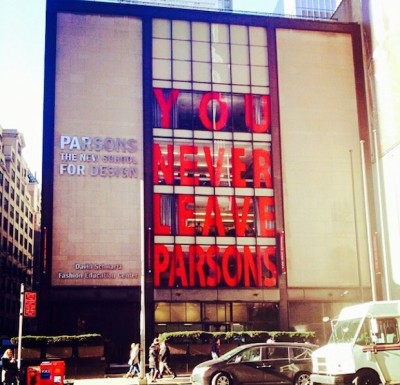
That said, I applied to Parsons – The New School for Design in NYC without telling a soul, hoping and praying I’d get in. Thankfully, I was accepted and I couldn’t have been happier! I would be sitting in the same seats and learning from some of the same professors who taught design icons like Marc Jacobs, Narcisso Rodriguez, Alexander Wang, Donna Karen, etc.
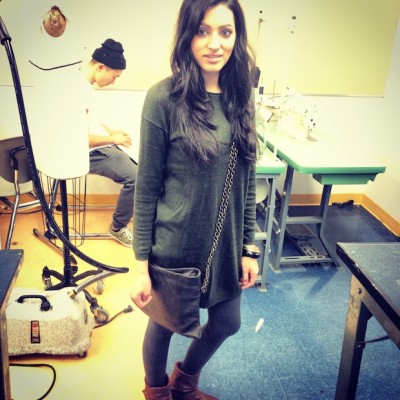
I got the acceptance letter, and within two weeks I resigned from my job (in Chicago at the time), booked a month long trip to India to study the art and craftsmanship of my roots, and packed up and moved to New York (I didn’t even have an apartment when I moved. Needless to say, this was a ‘no looking back, I’m jumping in’ decision)! I haven’t looked back since and I don’t have a regret in the world about following my passion.
Did you know that you wanted to design your own collection right away or did you think about other careers in fashion?
I knew from the start I wanted to design my own collection, and more importantly build a brand from the ground up that reflected who I am as a woman, a lover of fashion, an artist, and an American born Indian. Also, because I had already gone to business school and worked in the corporate world for some time, I felt ready. For those coming out of school and wanting to start their own business, I’d say to wait and get some work experience since it only helps to build your confidence as a business owner and ultimately as a salesperson because let’s face it – with any business, you must make a profit, otherwise it’s a hobby.
What was the first step you took when you finally decided to leave your job and launch your label?
Everything happened fast in my case! The moment I got my acceptance letter from Parsons, I took it to mean ‘here’s my ticket to giving my dream a shot.’ With that, I drafted my resignation letter, left my job, and moved to New York.
Tell me about your time in India and what you did and learned? You mentioned cold calling and making appointments w/designers, visiting factories and meeting w/karigars, etc.
Before taking off for India, I did a TON of research – regarding manufacturers, suppliers, designers, production houses, karigars/embroiderers, etc. I had a jam packed schedule of meetings ahead of me by the time I landed in India. I went from meeting to meeting and even knocked on doors and made cold calls in hopes to talk to ANYONE who was willing to give me 5 minutes of their time to help me understand something (anything) about the garment industry in India – how to do business there, fabrications, regional craftsmanship, sales, etc.

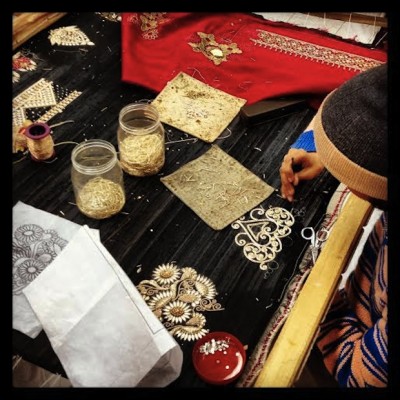 Thankfully, I can speak Hindi fluently and so that made things easier, but the locals could still pick up on the fact that I was a foreigner and that was one of my biggest challenges. I had to tell myself early on to mentally get over this and not let it shy me away from opportunity. So, I just jumped right in, talked to anyone and everyone I could in the industry and started making business relationships.
Thankfully, I can speak Hindi fluently and so that made things easier, but the locals could still pick up on the fact that I was a foreigner and that was one of my biggest challenges. I had to tell myself early on to mentally get over this and not let it shy me away from opportunity. So, I just jumped right in, talked to anyone and everyone I could in the industry and started making business relationships.
That trip to India (prior to starting at Parsons) was pivotal in my career decisions going forward. I learned more than I can explain in words – from the structure of the garment and fashion industry there, processes, the history of various embroideries, fabrics and hand-craft, retailing, etc.
I knew as a “foreigner,” doing business there would not be an easy feat, but I was up for the challenge ! Just like any country, India has its own way of doing business, with different regulations, and different processes. I learned very quickly that in everything I did for the business going forward, I’d have to allow more time as a buffer – more time to research and learn on my own, more time for delays, etc.
I also recognized that here, in the US, there are many more regulations around the industry. Although, those same regulations may not exist in India, I have to constantly make my production contacts there aware of these laws and the potential penalties associated. The worst thing you can do as a business owner, and especially here, is to be naïve and not study up on various regulations – before you know it, you can be fined or even put out of business for failing to comply.
How did your time in India reaffirm that this was what you should do?
My main reason for going to India was because I knew Indian craftsmanship and fabrications would be part of my aesthetic and sourcing plan. I grew up loving the intricacies we so often see in ethnic Indian clothing (lehengas, saris, etc.) and I wanted to find a way to incorporate those details into modern silhouettes that appealed to a Western audience.
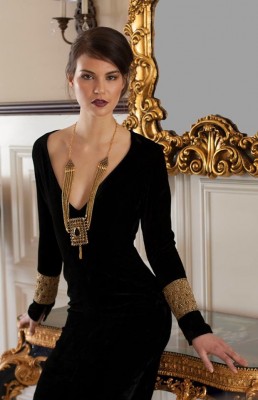
I also wanted to pay tribute to those craftspeople that spend endless hours embroidering, beading, weaving or stitching by hand. I don’t think they personally know the worth of their talent. Through their skills, I learned more about India and its rich art and I am forever grateful for the lessons the craftspeople taught me, without their even knowing it.

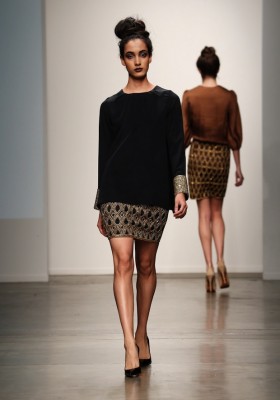
Tell me a bit about your program at Parsons and how that prepared you to launch Naveda?
I came back from India with more inspiration than I knew what to do with! Within a week of returning from my trip, I began my program at Parsons, where I learned the technical side of design (an unbelievable experience). Simultaneously, I started Naveda. Life was hectic to say the least. I worked until the wee hours of the morning in the studios at Parsons, then came back to my apartment to switch gears and work on my business. I was also working for the legendary, design genius and my personal idol, Naeem Khan, at the time. Things were busy and I didn’t sleep much but I absolutely LOVED it! My experience at Parsons was incredible! It pushed me to think in creative ways that I hadn’t explored before. 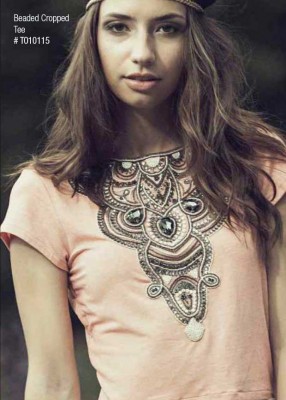
After having gone to Parsons, I can understand completely why it is known as the premiere design school in the world. The professors, the talent, the opportunities to directly take part in the industry, and the level of professional skill and craft that is taught in such a short amount of time is indescribable. I would tell anyone thinking of going into this field to get your technical training first. Many assume that if they love fashion or art, it’s an easy field to get in to and that’s not true. There is a science to design, like anything else – a deep understanding of foundation, construction, history, sales, marketing, and even the technical “lingo” one must first learn before going into the field.
What does the name ‘Naveda’ mean?
The brand was created as a reflection of who I am, a first generation, Indian American. I love the concept of subtly blending exotic and traditional elements from the “Indian” in me with modern, clean lines and structure from the “American” in me and the name is a subtle collision of two worlds. It is actually my first initial and last name spelled backwards – a true reflection.
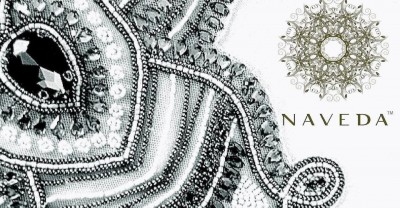
Did you put a business plan together before you formalized the business?
I can’t say I put a “formal” business plan together when I first started, but because of my business background, I did thoroughly think through and jot down all of my thoughts concerning the various components of a business plan, from the product development process to the customer profile to financial projections, marketing, etc. Over time, those notes became more formalized and became my current business plan.
As I learn new things about the industry and further develop the brand, the plan changes – but the core and my mission remains the same. I don’t think there is anything wrong with seeing a business plan as an evolving strategy – sometimes you don’t see the right path until you are actually knee-deep into it and then you have an ah-ha moment that tells you either something will or will not work. The plan only enhances from there.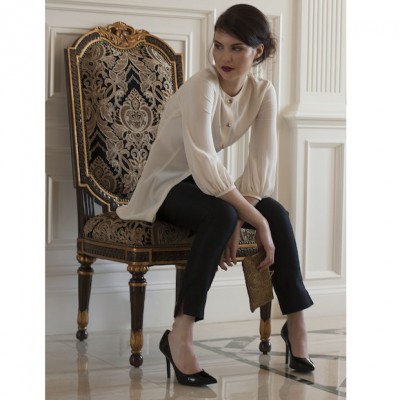
What were the crucial elements that you needed to have in place before you moved forward with the business?
Three things really:
Understanding the industry and how to do business within it – This involved research, research, research! I can’t stress that enough. Before really beginning the business, I spent endless hours researching everything related to the industry and the market – from customer demographics to manufacturers and suppliers, to fabric and embroidery details, to designers/brands who would be my competition, to the administrative steps needed to be in business, the regulatory environment, sales strategies, etc. The list goes on. Even when I went to India for the first time, I didn’t go blindly and without a plan. I researched fashion houses, suppliers, textile mills, embroiderers, and retailers before taking off and crossing my fingers. After doing as much research as possible, I felt more confident and that helped me talk to anyone I could while in India, despite my fears.
- Technical know how – There is a common misconception that fashion or design is an “easy” field. Like anything else, there is a science to it and a purpose for everything involved. It’s about more than just “loving” art or fashion, or being creative. With any career path, no matter the field, one must get the education and training necessary to learn the technical skills needed to succeed. Though, I had business education and experience before starting Naveda, I went on to study fashion design because I saw no other path. I needed to get the technical skills down. To me, there is simply no other way to succeed and grow.
- Seed money – Those in this field know first hand that launching a fashion brand and designing a collection is a huge investment that demands capital. Without having an understanding of the expenses involved and the capital to support it, at least initially, it is virtually impossible
How soon after you launched Naveda did you build your team and who were the first hires you made?
I noticed within the first six months that this would not be an easy undertaking to do on my own – there are so many moving parts of starting a business and though I worked virtually around the clock, with being in school full-time at Parsons and working on Naveda, there were simply not enough hours in the day to get the brand where I wanted it to be. I relied very heavily on my mentors for support and guidance, but I realized quickly that finding talented people to jump on board with me would only benefit my mission. The first few hires were interns that studied/worked in fashion marketing and then I added a branding and graphic design specialist.
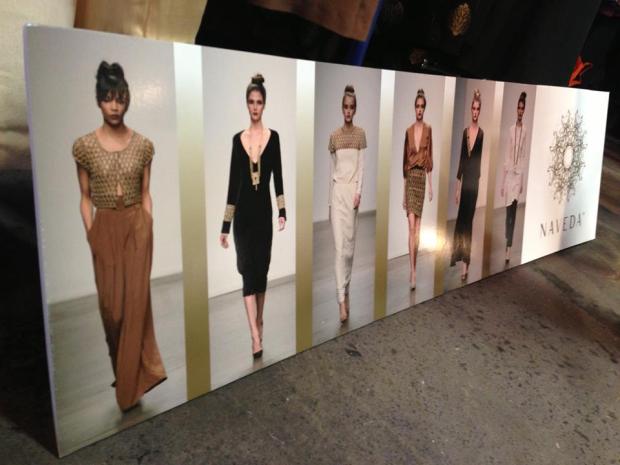
How did you find your first customers?
In the beginning, like any startup, I had to be very cautious of where I was investing money. I couldn’t initially put resources into marketing and so I relied on what I think is the most powerful avenue – word-of-mouth. I talked to people in my existing network about what I was doing with Naveda, my aesthetic, and who I saw as a Naveda woman. I started to use social media to present my work (even if they were just sketches) so my network could visually be part of Naveda and this dream of mine and begin to help spread the word. My initial network began to grow into a community of supporters, if you will, and for that I am beyond grateful.
Over time, my sales strategy has expanded to now include retailers versus just individual buyers. I have hired experienced sales people to help bring Naveda to the retail marketplace who bring a wealth of knowledge and experience in this arena.
You’ve had some great press already, with celebrities wearing Naveda Couture. How did those opportunities come about?
One of the biggest platforms that helped initially was presenting my line during New York Fashion Week (a show produced by Nolcha). It gave me the ability to show my work to fashion industry contributors, press, media, and potential buyers. Marketing and building brand awareness is an expensive endeavor, costing thousands of dollars each month, so the real challenge was figuring out what will ultimately help the business’ bottom line. 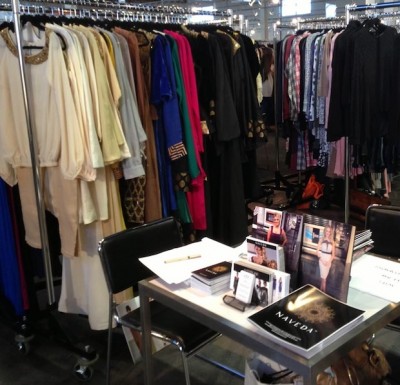
I’m over-the-moon ecstatic and grateful for the exposure I’ve had and the ability to dress Hollywood starlets in Naveda, however, I’m much more interested in building this brand as a whole long-term. Of course, I’d absolutely love to dress more celebrities (and hope that continues), but more importantly I want to create solid brand recognition and real connections with my customers. A person does not become a customer simply by seeing a celebrity wear your brand, it’s deeper than that. I often think about how I shop, and why I follow certain brands. It’s not because someone else is wearing the brand, but because that brand has made an intimate connection with who I am and understands my lifestyle and taste really well. That’s the real goal for me with Naveda. I want to really know my customer and be part of her life through my work.
What is one crucial piece of advice you would give someone who wants to follow your path and become a fashion designer?
I would say ‘stay passionate.’ I don’t mean just loving design or fashion, rather making your brand and your mission the core of your passion and staying committed to that. So many entrepreneurs give up when they realize how much hard work is involved in launching a label, or when the first few doors close. Use each and every day as an opportunity to learn to be better the next day, ask for advice from those around you, and listen carefully to your consumer – after all, your passion and therefore, your brand is for them! 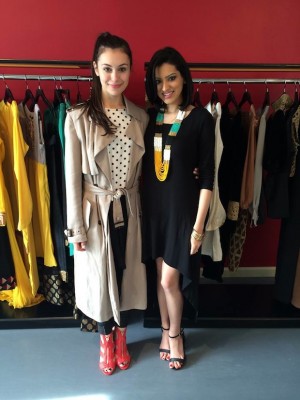
Given the hard work needed to start a business, what are some of the sacrifices you’ve had to make to get your business to where it is today?
It is definitely a lifestyle change to start a business on your own, regardless of the industry. To even begin to dream of success, one has to be willing to work harder than ever before, living and breathing the business (whatever it may be). Of course, I’ve had to make sacrifices, like working into the wee hours of the morning and not being able to go to every social event that comes up. However, I’ve been extremely blessed to have a support system of friends and family that just get it.
They understand when I need to miss out on certain things and never make me feel guilty for following this passion. The definition of “work/life” balance changes when you own your business and the line between the two somewhat fades because it is much more difficult to hit the mental “off” button at 5pm or on the weekend. You simply can’t because it’s such a huge part of you and that’s not a bad thing. What you can do to combat that is use every experience, every day-to-day situation, every person you interact with as a tool to be inspired, to learn from, and to see your mission through a new lens.
What is your dream for the future of Naveda Couture. Where would you like to see the brand stocked that it isn’t currently?
Currently, we have two sales avenues – (1) through our e-shop on the Naveda website, and (2) through other retailers. This Fall, Naveda Couture will be in select luxury boutiques across the country. My hope is to expand both avenues – creating more of an online presence and a real Naveda experience through e-shopping, as well as selling in more stores domestically and globally. In time, I see having my own retail store but that is a whole other animal I look forward to exploring when it makes sense.


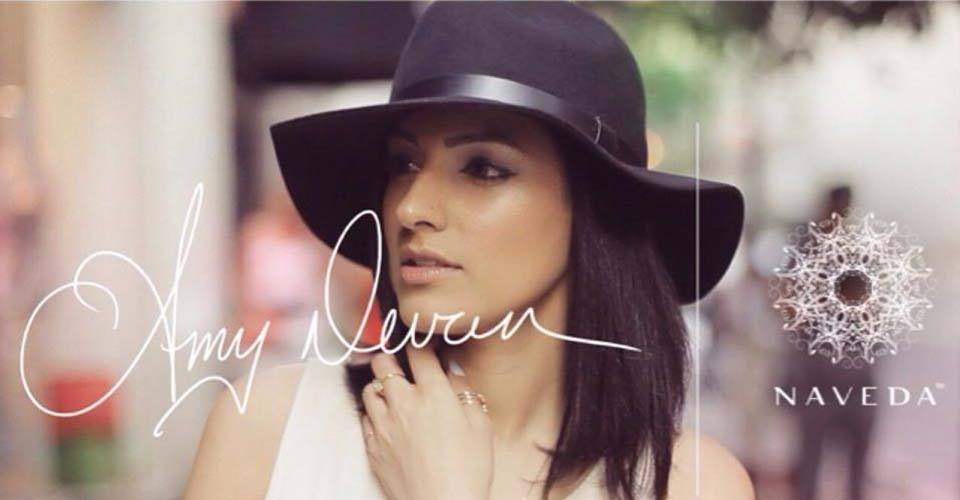

There are no comments
Add yours